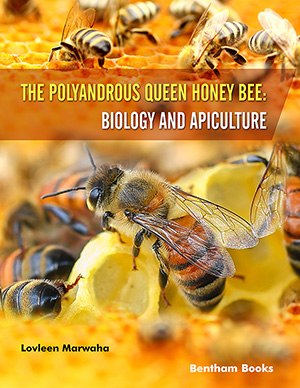Abstract
Queen honey bee is polyandrous, per her mating tendency with multiple drones of other colonies in the drone congregation area. Post-hatching, the virgin queen takes a few short flights near the colony, and eventually, within two weeks of her posthatching, she takes 1-2 nuptial flights for mating. During mating, the queen receives ample sperm storage for her entire life. Virgin queen attracts drones through her characteristic pheromonal profiling, especially by mandibular gland pheromones. After mating, drones die, and the queen returns to the native hive to perpetuate the species. The queen can regulate the fertilization of eggs; therefore, a colony is the composite aggregation of bees of different patriline inheritance. Queens can lay two types of eggs, fertilized and unfertilized, which tend to develop into female and male castes. Therefore, the queen can potentially regulate the overall strength of the colony and caste ratio to direct the colony in a specific direction.
Keywords: Drone congregation area, Mating, Queen honey bee, Reproduction.






















